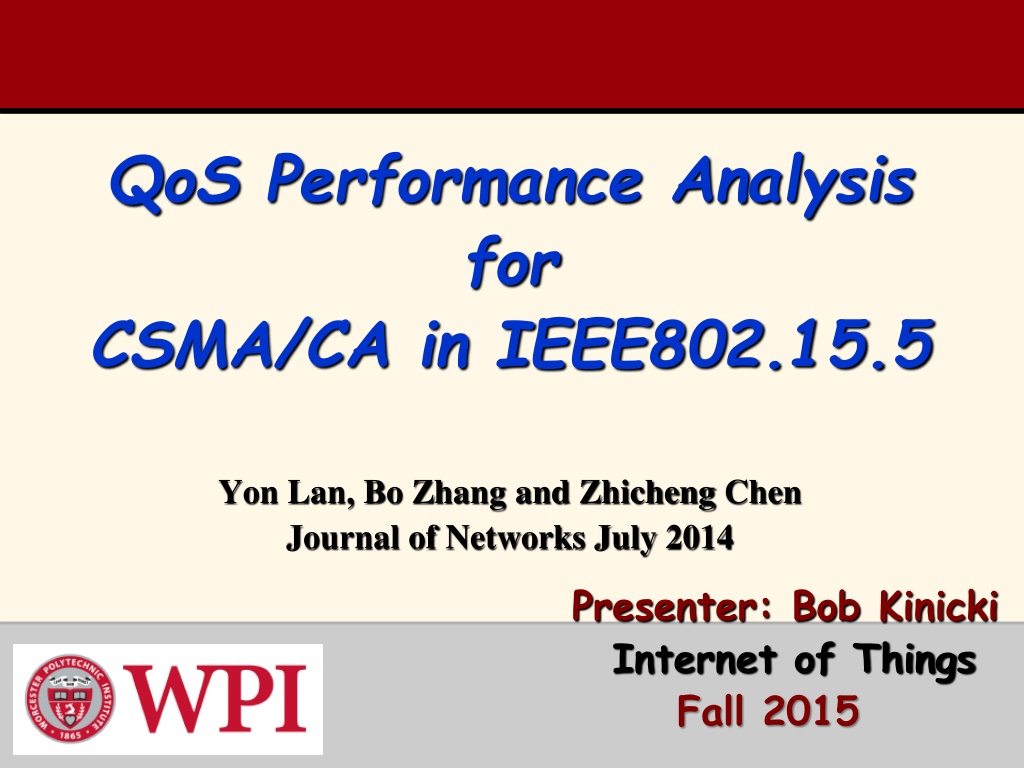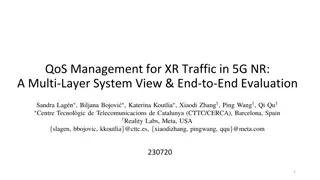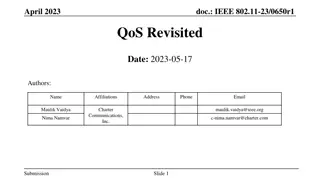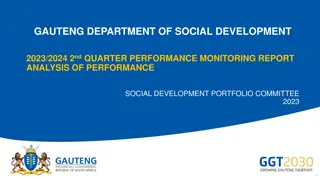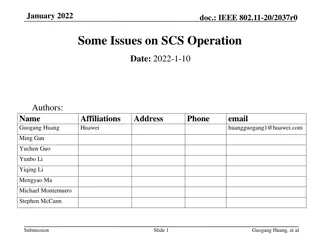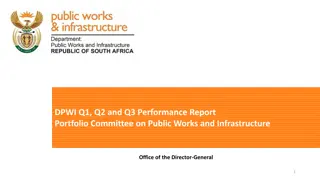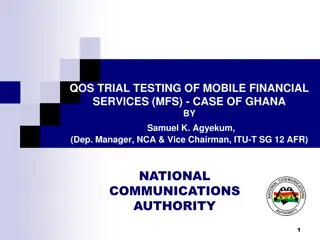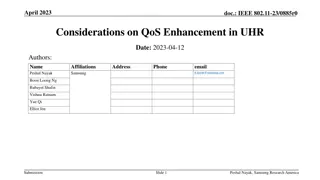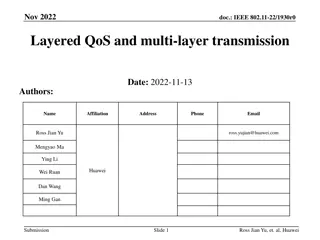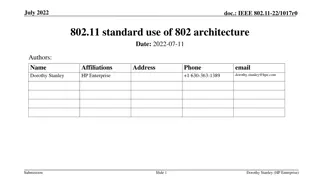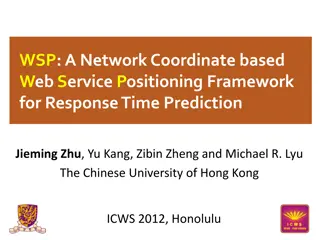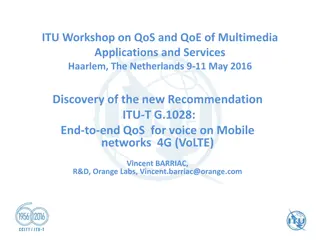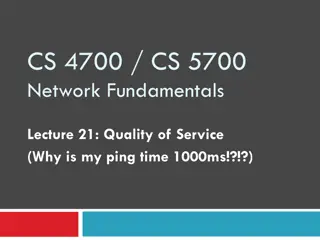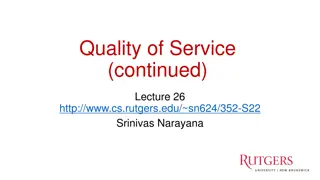QoS Performance Analysis
This paper discusses the suitability of slotted CSMA/CA for Wireless Sensor Networks (WSNs) and focuses on the beacon-enabled mode for IEEE802.15.4. It analyzes the performance of the protocol in terms of Quality of Service (QoS) but lacks a practical intuitive understanding of QoS. The study provides insights into the frame format, superframe structure, simulation methodology, and results analysis in the context of Internet of Things.
Download Presentation

Please find below an Image/Link to download the presentation.
The content on the website is provided AS IS for your information and personal use only. It may not be sold, licensed, or shared on other websites without obtaining consent from the author.If you encounter any issues during the download, it is possible that the publisher has removed the file from their server.
You are allowed to download the files provided on this website for personal or commercial use, subject to the condition that they are used lawfully. All files are the property of their respective owners.
The content on the website is provided AS IS for your information and personal use only. It may not be sold, licensed, or shared on other websites without obtaining consent from the author.
E N D
Presentation Transcript
QoS Performance Analysis for CSMA/CA in IEEE802.15.5 Yon Lan, Bo Zhang and Zhicheng Chen Journal of Networks July 2014 Presenter: Bob Kinicki Internet of Things Fall 2015
Introduction Authors argue that slotted CSMA/CA is particularly suited for WSNs where traffic is discrete or non-cyclical. Focus is on beacon-enabled mode for IEEE802.15.4. QoS is used constantly in this paper but the authors simulated application is mathematically-based with no real intuitive notion of QoS discussed. Internet of Things Slotted CSMA/CA in IEEE802.15.4 2
IEEE 802.15.4 Frame Format D pan Dst EUID 64 S pan Src EUID 64 Max 127 bytes preamble FCF Dst16Src16 Fchk DSN SFD Len Network Header Application Data Low Bandwidth (250 kbps), low power (1 mW) radio Moderately spread spectrum (QPSK) provides robustness Simple MAC allows for general use Many TinyOS-based protocols (MintRoute, LQI, BVR, ), TinyAODV, Zigbee, SP100.11, Wireless HART, 6LoWPAN => IP Choice among many semiconductor suppliers Small packets used to keep packet error rate low and permit media sharing. Culler slide Internet of Things Slotted CSMA/CA in IEEE802.15.4 3
Outline Introduction Beacon-Enabled IEEE802.15.4 and Superframe Structure Simulation Methodology Analysis of Simulation Results Conclusion Critique Internet of Things Slotted CSMA/CA in IEEE802.15.4 4
Beacon-Enabled IEEE802.15.4 In beacon-enabled mode, communication behavior is constrained by superframe structure which is synchronized when coordinator periodically sends beacon frames. Each sensor node s communication process happens in the allocated slot time. Internet of Things Slotted CSMA/CA in IEEE802.15.4 5
Figure 1: 802.15.4 Superframe Internet of Things Slotted CSMA/CA in IEEE802.15.4 6
Beacon Interval (BI) and Superframe Duration (SD) BI is defined by BO (Beacon Order). SD is defined by SO (Superframe Order). Internet of Things Slotted CSMA/CA in IEEE802.15.4 7
Duty Cycle (DC) Duty cycle of beacon-enabled 802.15.4 is defined as: Example: BO-SO = 2 DC = 2-2 = = 25% Internet of Things Slotted CSMA/CA in IEEE802.15.4 8
Sleep Time (ST) For each BI, the inactive period is the node sleeping time (ST) which can be calculated as: Hence ST is affected by the value of BO and duty cycle (i.e., BO-SO) Internet of Things Slotted CSMA/CA in IEEE802.15.4 9
Three What if observations 1. BO fixed; BO-SO grows: - ST grows and DC decreases - E down, D up, O down 2. BO-SO fixed; BO grows: - ST grows - E down, D up, O down 3. BO fixed; as BO-SO increases from 0 to 14, change in ST decreases. Internet of Things Slotted CSMA/CA in IEEE802.15.4 10
Simulation Settings 10 m x 10 m simulated area, 2.4 GHz, 250 kbps, 600 sec. duration using OPNET Sensors deployed randomly to create star-topology. {This is very unclear!} Power set at 1 mW, QPSK used. No explanation of application traffic model: Internet of Things Slotted CSMA/CA in IEEE802.15.4 11
Figure 2: OPNET Simulation Internet of Things Slotted CSMA/CA in IEEE802.15.4 12
Figure 3: 10 Node Simulation Large delay Small duty cycle Internet of Things Slotted CSMA/CA in IEEE802.15.4 13
Figure 4: 30 Node Simulation Larger delay Internet of Things Slotted CSMA/CA in IEEE802.15.4 14
Figure 5: 50 Node Simulation Internet of Things Slotted CSMA/CA in IEEE802.15.4 15
Simulations Varying BO Authors want to study first what if : - BO fixed; BO-SO varies Fix the number of devices at 14. {Appears to minimize slot collisions!} 400 seconds simulated time. Use Table II for traffic sources. Internet of Things Slotted CSMA/CA in IEEE802.15.4 16
Table II Why this traffic? Internet of Things Slotted CSMA/CA in IEEE802.15.4 17
Figure 6: Energy vs BO Best performance Internet of Things Slotted CSMA/CA in IEEE802.15.4 18
Figure 7: Output Load vs BO Internet of Things Slotted CSMA/CA in IEEE802.15.4 19
Figure 8: Delay vs BO Best performance Internet of Things Slotted CSMA/CA in IEEE802.15.4 20
Conclusions Basically authors argue this presentation lets one see the tradeoffs in setting for beacon-enabled, slotted CSMA/CA for IEEE802.15.4 Internet of Things Slotted CSMA/CA in IEEE802.15.4 21
Critique No justification or explanation of traffic sources. They use QoS inappropriately end- to-end delay never defined. No discussion of traffic routes. No sense of slotted collisions and no formal assignment to slots. Why only star-topology? Internet of Things Slotted CSMA/CA in IEEE802.15.4 22
